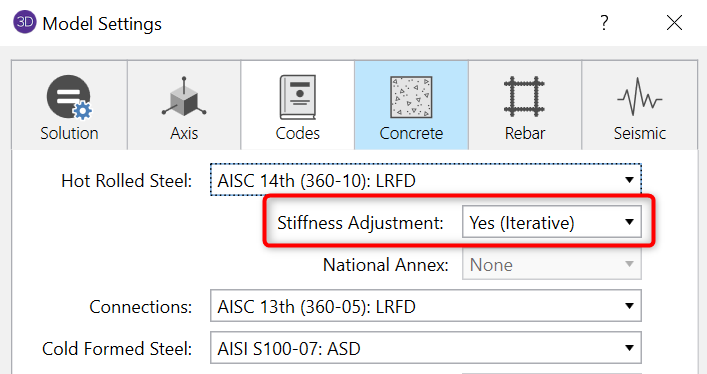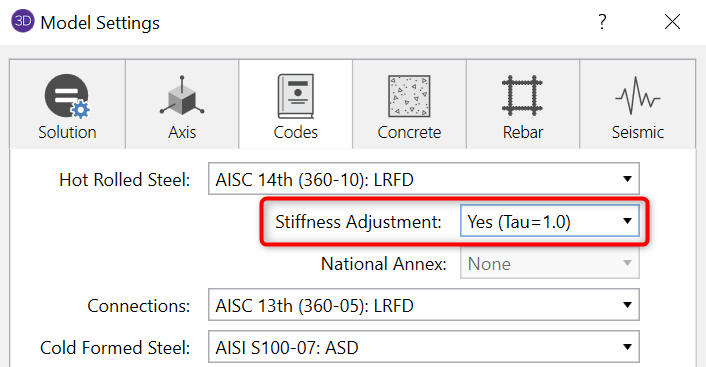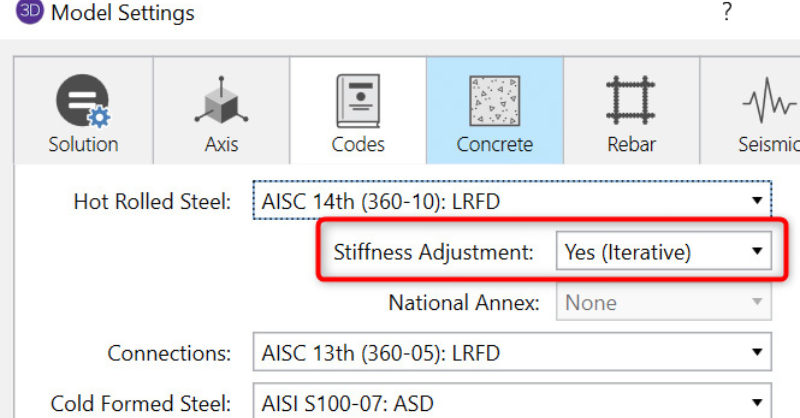Products
Learn
Support
Company
When solving a RISA-3D model with hot rolled steel members under the AISC 360-05 (13th Edition) or AISC 360-10 (14th Edition) codes you may find references to a factor called Tau_b. To understand what this factor is you should first be familiar with the Stiffness Adjustment in RISA-3D, then see the AISC 360-10 Specification, Section C2.3.2:
“An additional factor, Tau_b, shall be applied to the flexural stiffnesses of all members whose flexural stiffnesses are considered to contribute to the stability of the structure”
Link: Stiffness Adjustment in RISA-3D
By applying this factor in addition to the 0.80 factor to flexural stiffness (EI) of the members the deflections for those members increase significantly. This code provision is only intended to be applied to members whose flexural stiffness contributes to the stability of the structure though, such as beams and columns within moment frames.
The calculation of Tau_b is a function of the ratio of axial force in the member to its axial yield strength. For members where this ratio is less than 0.5 (members which are less than 50% stressed axially) the value of Tau_b is 1.0, which means that is has no impact on the member stiffness.
For members which are more than 50% stressed axially the value of Tau_b is calculated by an iterative procedure in RISA-3D, so long as this has been enabled in the Global Parameters, under the Codes tab.

The AISC Specification allows for certain conditions where Tau_b may be taken as 1.0 for all cases, which speeds up analysis and reduces overall deflections and drift. For more information on those conditions see the AISC 360-10 Specification, Section C2.3.3. If your structure meets those conditions you can force Tau_b to be taken as 1.0 by setting this in the Global Parameters, under the Codes tab.

